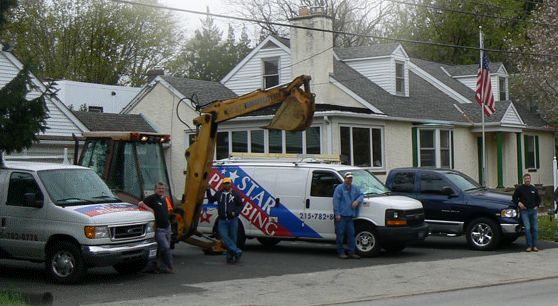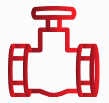What Are The Different Types Of Quick Disconnects? – A Comprehensive Guide
Quick disconnects are a type of mechanical fastener that allow two separate parts to be quickly and easily connected and disconnected without the need for tools. They are used in a variety of applications, including industrial machinery, automotive systems, plumbing systems, and electrical wiring. There are several types of quick disconnects available on the market today, each designed for specific applications.
The most common type of quick disconnect is the push-to-connect style. This type utilizes a spring-loaded mechanism that allows two parts to be quickly connected by pushing them together and then releasing them to separate. Push-to-connect quick disconnects are used in a variety of applications including automotive fuel lines, pneumatic systems, and plumbing fixtures.
A second popular quick disconnect is the threaded style. It features external threads on one side that can be connected to an internal thread on another part by hand or with a wrench. Threaded disconnects are commonly used in plumbing systems and other industrial machinery where tight seals are required.
The third main type of quick disconnect is the bayonet style. It features an internal thread with a circular collar that can be rotated to lock into place when two parts are connected. Bayonet style quick disconnects are commonly used in automotive systems like door locks and window regulators.
Finally, there is the cam-and-groove style which uses a series of cam slots that snap together when two halves are pushed together. Cam-and-groove quick disconnects have high tolerance for vibration and shock so they’re often used in fluid transfer applications like fuel lines or air hoses.
What Are The Different Types Of Quick Disconnects?
Quick disconnects are an important part of all plumbing systems. They are used to connect, disconnect and/or replace parts of the plumbing system as needed. Quick disconnects provide a budget friendly solution that is safe and easy to use. There are several types of quick disconnects that can be used in different applications.
Advantages of Quick Disconnects
Quick disconnects provide many advantages for plumbing systems. They offer budget friendly solutions that allow for the replacement of parts without having to purchase expensive replacement parts. In addition, they provide a safe solution that prevents water damage while allowing for quick and easy connection and disconnection of parts.
Types of Quick Disconnects
The most common types of quick disconnects include push & connect fittings, compression fittings, flare fittings, tube connectors, sleeve couplings, and threaded joints. Push & connect fittings are the easiest to install and are often used for shower heads and faucets. Compression fittings are designed for a tight fit and are often used in gas lines or other high-pressure applications. Flare fittings provide an even tighter fit than compression fittings and are commonly found in air conditioning systems or gas lines. Tube connectors allow two pieces to be connected together without a tight fit but offer an easy way to join two pipes together quickly and safely. Sleeve couplings offer a secure connection but require two pieces to be connected together at once before being secured with clamps or screws. Lastly, threaded joints provide the most secure connection possible but require special tools for installation.
Installation Tips For Quick Disconnects
When installing quick disconnects it is important to ensure that measurements and connectors match properly before installation begins. It is also important to deburr any pipes before installation as this will help prevent leaks in your system over time. Lastly, it is important to take safety measures during installation such as wearing gloves or other protective gear when handling pipes or sharp edges on connectors or fittings.
Maintenance Tips For Quick Disconnects
To keep your quick disconnects functioning properly it is important to use approved lubricants and cleaners on them regularly as well as inspecting them regularly for wear or damage that could cause leaks later on down the line. It is also important to store your quick disconnects in the right conditions such as away from freezing temperatures which can cause them to become brittle over time leading to potential failure points down the road when put under pressure again after thawing out from freezing temperatures..
Adapters Used With Quick Disconnects
Adapters can be used with quick disconnects in order to help ensure compatibility between different types of connections when connecting two pieces together. Threaded adapters are typically used when one side has a threaded connection where as compression adaptors may be used if one side has a compression fitting instead of a thread fitting type connection. Specialty adaptors may also need to be used depending on the application at hand so it’s important to select the right adapter for the job at hand in order for everything to function properly afterwards once installed correctly with all necessary safety protocols followed during installation process..
What Are The Different Types Of Quick Disconnects?
Quick disconnects are an essential plumbing tool that allow for fast, easy, and secure connections between pipes. They are available in a variety of styles and sizes to accommodate a wide range of applications. Quick disconnects provide an efficient way to connect and disconnect water, oil, gas, or any other type of fluid line. They can be used in a variety of situations ranging from residential to industrial applications.
Types Of Quick Disconnects
The most common types of quick disconnects include cam-lock fittings, push-to-connect fittings, and threaded fittings. Cam-lock fittings use a cam arm to create a secure connection between two pieces of pipe or tubing without the need for tools. Push-to-connect fittings use an internal valve which allows for quick connections with just one push of the fitting’s body. Threaded fittings require threading into place and use nuts to tighten the connections.
Advantages Of Quick Disconnects
Quick disconnects offer many advantages over traditional pipe connections such as saving time during installation and maintenance, providing easy access for repairs, reducing the risk of leaks due to their secure connection methods, and reducing the need for tools when connecting or disconnecting pipes or tubes. Additionally, they are often more cost effective than other types of piping systems since they don’t require additional parts or labor costs associated with installation and maintenance.
Troubleshooting Issues With Quick Disconnects
When troubleshooting issues with quick disconnects it is important to identify loose connections as well as any pressure drops due to leaks or obstructions in the line. Additionally it is important to look for signs of corrosion on the fittings which could indicate a potential issue with the system if left unchecked. Solutions for corrosion issues may include using corrosion resistant fittings or applying anti-corrosion coatings on exposed metal surfaces within the system.
Security Of Quick Disconnects
Quick disconnect systems should always be secured against theft by using adapters, couplers, and other security measures such as locks on gates or doors which limit access to the system itself. Additionally it is important to ensure that all components are protected from natural elements such as rain and snow so that they remain secure even when not in use. Careful monitoring by operators should also be taken into consideration when utilizing quick disconnect systems so that any potential issues can be identified quickly before they become major problems.
Alternatives To Quick Disconnects
If quick disconnect systems are not suitable for certain applications then alternative methods such as soldering or brazing may be employed instead depending on the material being connected together. Additionally clamp type fitting alternatives may also be used depending on what type of material is being connected together and if there is enough room within the system itself for these types of connections. Finally heat shrink wraps and seals can provide additional protection against leaks in certain types of applications where quick disconnect systems cannot be used safely due to hazardous materials present in the environment around them or due to limited space constraints within certain areas where these types of systems are needed most often
FAQ & Answers
Q: What Are The Advantages Of Quick Disconnects?
A: Quick disconnects offer a budget friendly solution and are a safe option for replacing parts. They are easy to install and provide secure connections that won’t loosen over time. They also require minimal maintenance to keep them working properly.
Q: What Are The Different Types Of Quick Disconnects?
A: There are various types of quick disconnects available, including push & connect fittings, compression fittings, flare fittings, tube connectors, sleeve couplings, and threaded joints.
Q: What Should I Consider When Installing Quick Disconnects?
A: When installing quick disconnects it is important to ensure that all measurements and connectors match correctly; it is also important to deburr the pipes before installation for the best results. Additionally, it is essential to take safety measures during the installation process.
Q: What Should I Do To Maintain Quick Disconnects?
A: To maintain quick disconnects it is important to use approved lubricants and cleaners for maximum performance; additionally, regular inspections and repairs should be done as needed. It is also important to store connectors in a safe environment with proper precautions in place.
Q: What Security Measures Are In Place For Quick Disconnects?
A: Specialty anti theft measures are provided for adaptors, couplers, and fittings with quick disconnects; additionally these products should be monitored carefully when machinery operators are present. Damage prevention from natural elements should also be taken into account when using these products.
In conclusion, quick disconnects are a great solution for plumbing applications that require frequent disassembly. There are many types of quick disconnects, including cam-and-groove, push-in, flared and compression fittings. Each type of quick disconnect offers its own benefits and should be chosen based on the application, installation location and other factors. Understanding the different types of quick disconnects can help you choose the most suitable fitting for your specific needs.
Author Profile

-
Star Plumbing, located in Elkins Park, PA, is a full-service plumbing company owned and operated by Mitchell Gordon. Since its inception, Star Plumbing has been providing its customers with reliable, quality plumbing services.
The Star Plumbing website offers informative articles on DIY plumbing and plumbing equipment, offering readers helpful advice and tips on how to take care of their own plumbing needs. This is a great resource for those who are looking to tackle a plumbing project themselves, as it provides useful information and advice on how to safely and successfully complete a plumbing job. Additionally, the website provides detailed descriptions of the various plumbing tools and equipment that are available, as well as detailed instructions on how to use them.
Star Plumbing’s website is a great resource for anyone with plumbing needs. Whether a customer is looking for advice on how to take care of their own plumbing or to schedule service from Star Plumbing, the website offers helpful advice and information for all their plumbing needs.
Latest entries
- April 12, 2024Plumbing Equipment And AccesoriesI Tested And Ranked The Best 10 Inch Rough In Round Toilet: And Here’s What I Found
- April 12, 2024Plumbing Equipment And AccesoriesI Tested And Ranked The Best Stone That Cleans Toilets: And Here’s What I Found
- April 12, 2024Plumbing Equipment And AccesoriesI Tested And Ranked The Best Heat Tape For Plumbing: And Here’s What I Found
- April 12, 2024Plumbing Equipment And AccesoriesI Tested And Ranked The Best Kaboom Toilet Bowl Tablets: And Here’s What I Found
